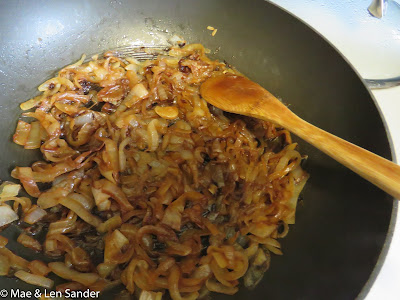Do you think of lingonberry jam as the condiment on your Swedish meatball plate at the Ikea restaurant? Or do you think about the jar of "Ekologisk SYLT LINGON" in the food shop just after the Ikea checkout lines? That’s what lingonberry jam meant to me until I read a study of lingonberry consumption in Sweden. This study, “The Red Gold of the Forest: Lingon Berries,” appeared in the book
Man, Food And Milieu: A Swedish Approach to Food Ethnology by Nils-Arvid Bringéus, published 2001.
The author explains the development of mass lingonberry cultivation and the economics of buying and selling lingonberries in Sweden a century ago. In particular, he writes, large-scale lingonberry gathering and money-making was not ages old:
“The extensive felling of the forests in southern Sweden around 1900 led to large clearings which, because of the plentiful light, were an excellent habitat for the berry-bearing shrub Vaccinium vitis-idaea, known in English (especially American English) as lingonberry.” (p. 183)
Much more interesting than early 20th century berry economics is the study of how Swedish people ate lingonberries, which had been gathered on a smaller scale for centuries. Bringéus questioned people who lived in small towns in the southern regions of Sweden about how they ate lingonberries. He also read accounts of food customs from the 18th and 19th centuries; for example, tenant farmers had to provide lingonberries to the owners of their land according to a document dated 1742. A recipe for lingonberry syrup appeared in a cookbook in 1837.
"As a traditional Swedish dish," Bringéus writes, "pride of place is undeniably occupied by meatballs. This has also given lingonberry jam a major role as an accompaniment .... Pickled gherkins are also used as an accompaniment here."
There's much more! In south-west Sweden, lingonberry jam was "an accompaniment to fried herring." In some regions, it was eaten with any fish other than salmon. It's also "a frequent complement to cabbage pudding and stuffed cabbage rolls." Lingonberry jam is also used as a condiment with dried bacon or diced bacon pancakes, fried smoked bacon and fried potatoes, blood sausage or blood pudding, liver, and other roast or fried meats. "Before the arrival of ketchup, lingonberry jam was also eaten with macaroni, according to an informant from Siljansnäs."
Bringéus quotes several individuals who described how their families ate lingonberries for dessert. The author interviewed one man who remembered eating "lingonberry jam with milk and hard bread, known as beta bröd, when there was no dessert." It's great with pancakes, he says, especially for those who thing strawberry jam is too sweet. Lingonberry juice was and still is popular. One chef rather recently invented a lingonberry mousse. (Quotes are from Man, Food And Milieu, pp. 189-193)
I was equally interested in the many other essays about Swedish food and food customs in Man, Food And Milieu. Sources of information include wide-ranging ethological research that began in the 1960s, and informants often remembered experiences of themselves and their relatives going back to the late 19th century. Also, the author's personal memories enrich his writings. As I knew very little about Swedish cuisine, other than Ikea, I found this to be a remarkably informative book.
Once I started thinking about Swedish food beyond Ikea, I noticed some recent articles about the subject. For example, a recent article in the New Yorker, "How to eat candy like a Swede" by Hannah Goldfield, offered this interesting observation:
"Nordic countries, in general, are crazy for candy. On a trip to Iceland a few years ago, I was amazed by the wide selection of sweets sold by the pound at even the most average-looking gas stations. But if any one particular country knows from candy, it’s Sweden, whose residents, according to a study by the Swedish Board of Agriculture, eat more per year per capita—more than thirty pounds per person each—than the citizens of any other nation. In Sweden, every Saturday is effectively a national holiday, called lördagsgodis, which means “Saturday candy.” Every corner store has a wall of pick-and-mix bins. The history of how this tradition came to be is surprisingly dark: in the nineteen-forties, in conjunction with several candy corporations, the Swedish government performed tests on patients in a mental institution to explore the hazards of consuming sweets. When it was determined that too many would make your teeth rot, lördagsgodis was born—Swedish citizens were urged to have as much candy as they liked, as long as they limited their consumption to one day a week." (source)
Also, a current article in The Economist reviews Japanese and Asian-fusion restaurants in Stockholm:
"Stockholm has kept innovating and has increasingly fallen under the influence of another food culture – Japan. This makes sense. Scandinavian seafood is excellent and abundant, which makes it perfect for eating raw. And both the Japanese and the Swedes have a way with fermentation. ... There are excellent traditional Japanese restaurants in Stockholm, such as Sushi Sho and Shibumi, but the standout dining experiences are found in the places where Nordic meets Nippon." (source)




















































